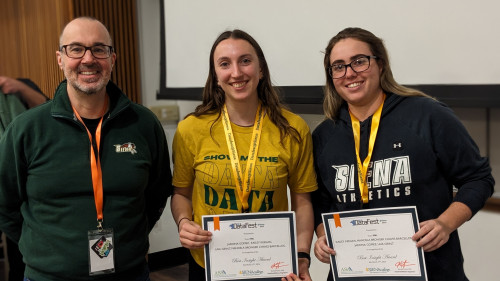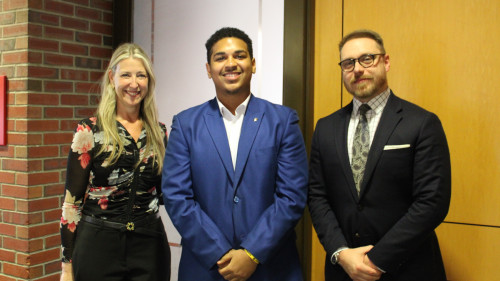
One of the bigger challenges for online teaching is making science research compelling and replicable outside the classroom or lab.
Mary Beth Kolozsvary, Ph.D., associate professor of environmental studies and sciences at Siena and a board member and education coordinator for the Ecological Research as Education Network (EREN), recently co-authored a grant proposal for the National Science Foundation (NSF) to support the creation of online teaching tools that advance field ecology and data science.
The proposal involves a partnership with the National Ecological Observatory Network (NEON). Projects use the EREN model of promoting hands-on, coordinated data collection by undergraduate students across multiple sites but also include opportunities to link with and compare local datasets to NEON's continental scale datasets. Student data collection can be done in natural areas, on campuses, in local parks, or in backyards in urban and rural areas.
She received word in July that the NSF awarded a one-year, $86,735 grant for four projects developed by teams of faculty-researchers at schools across the nation, including Lichens in Diverse Landscapes led by Kolozsvary and faculty at SUNY Plattsburgh and Belmont University.
So how does the lichen experiment work, and how is it relevant?
Kolozsvary explained that lichens are “well-known sentinels” of problems with air quality. This project makes use of publicly-available datasets on lichen presence and abundance and wet deposition, paired with geospatial data on air quality, tree canopy cover, and locally collected field data, to better understand how lichens respond to anthropogenic environmental pressures.
“Students and instructors will explore and gain experience with GIS, National Ecological Observatory Network data, statistical analyses, and field data collection as part of this project,” she said.
This project has three modules and can be the subject of a course laboratory activity lasting between one and three weeks. Those learning from home can easily find the material they need for the lab.
“All you need is a tree of sufficient diameter, with lichen on it.”
Other projects benefiting from the NSF grant are Backyard Pollinator Surveys (Rochester Institute of Technology); Plants in the Human-Altered Environment (Washington & Jefferson College and The University of the South); and Mosquito Surveys along Anthropogenic Impact Gradients (Northern Kentucky University.)
Christina Macfarlane ’16, a former earth science teacher at Schenectady High School, created a video of the lichen project for interested teachers and helped troubleshoot field sampling protocols.
Zoom webinars were held in August to introduce faculty across the country to the projects and how they can be used in their courses.
“We received great feedback on the Lichens in Diverse Landscapes project and interest in implementing this flexible learning project this fall. We are excited to move this project forward,” said Kolozsvary.
The grant recipients are also partnering with Quantitative Undergraduate Biology and Ecological Synthesis (QUBES) to support a faculty mentoring network. Module developers and faculty implementing these modules this fall will meet every two weeks to support each other, provide feedback, and improve the modules.
The EREN-NEON Flexible Learning Projects can be accessed at http://erenweb.org/eren-neon-flexible-learning-projects/.

